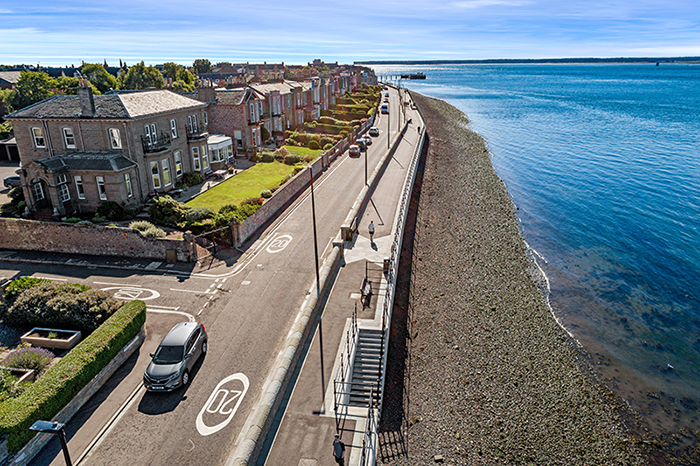
Building flood resilience requires communities to prepare for and mitigate the effects of climate change. Lee Davison, head of submissions – civils at McLaughlin & Harvey, explores the ways that communities can adapt and cope with flood risk.
ACCORDING to the Intergovernmental Panel on Climate Change (IPCC), flooding and coastal erosion are intensifying and ‘extreme sea level events that previously occurred once in 100 years could happen every year by the end of this century’. In Scotland, 284,000 homes and premises are considered to be at risk of flooding from rivers or the sea and with the increasing severity and frequency of floods, this figure could potentially threaten a further 110,000 Scottish properties by 2080.
Communities at risk of flooding can face significant disruption, from property damage to evacuations while contaminated floodwaters create health and safety risks. The personal toil and longer term negative impact on wellbeing, livelihoods and property is profound and is why adapting to flood risk is an ongoing challenge.
Collaborative approach
To remain resilient as we face more extreme weather, the nation needs to adapt with civil engineers having an increasingly important role in the creation of flood prevention schemes. At the forefront of designing and implementing multifaceted coastal defence and flood prevention infrastructure, McLaughlin & Harvey can help communities adapt and cope with flood risk. An essential ingredient is collaboration and by working with stakeholders including local communities, councils and statutory bodies such as The Scottish Environment Protection Agency (SEPA), this can inform decisions crucial for effective flood prevention. In addition, the involvement of the public through community consultations ensures that the concerns and needs of affected residents are considered. This in turn can lead to more equitable and sustainable flood prevention strategies.
Broughty Ferry
The approach taken by McLaughlin & Harvey in the development of flood protection infrastructure in Broughty Ferry serves as an illustration of a collaborative and public-focused strategy. Delivered as part of the Scape Group National Construction Major Works – UK framework, the £14 million works have successfully delivered flood protection for this coastal community east of Dundee whilst being attractive and in-keeping with the buildings and streetscape. The scheme ensures that the community, which is classified as a potentially vulnerable area, will be protected against a 1 in 200-year storm surge event.
At a length of 1,100 metres, the scheme was broken down into three sections and required a setback floodwall and river edge walkway building out onto the existing beach. Throughout the project, works were carried out with minimum disruption to residents and road users with the whole scheme carried out in bite-sized chunks. Each section that was commissioned, as others were completed, brought the final project closer to completion
In other words, section 1.1 was completed before proceeding to 1.2 and so this sequential approach from west to east minimised disruption to residents and they could see what the work entailed from the previous section being completed. A full-time Community Liaison Officer (CLO) from McLaughlin & Harvey was available to meet residents and stakeholders within Broughty Ferry and update them on the works on a regular basis.
Wider public benefit
Furthermore, an integral part of the flood protection scheme was the creation of a five-metre wide shared use cycleway and footpath along the entire length. By replacing the existing narrow one-metre wide footpath with a new continuous off-road walking and cycling scheme, it enables more people to access and enjoy the stunning coastline. This active travel plan had overwhelming community support at an early stage in the project, with 97% of respondents to a survey favouring the positive changes to the coastal path, and over 75% expressing their support for the initial concept designs.
Following a series of engagement events held throughout 2020 to gather further input, the plans were finalised, with construction commencing along the primary route in 2022.
The creation of a dedicated space for cyclists and pedestrians has created a better, safer environment to walk and cycle, and encourages both locals and visitors to incorporate physical activity into their daily routines instead of relying solely on cars or public transportation. The scheme not only offers benefits to people’s personal health and fitness but it also has positive impacts on the environment, reducing carbon emissions, congestion, and noise pollution.
Addressing the increasing risk of flooding in the UK requires a multifaceted approach that involves collaboration among stakeholders, community engagement, and a focus on environmental protection and public benefit. In the face of a changing climate, adapting to flood risk is an ongoing challenge, and effective solutions must be holistic and sustainable.










